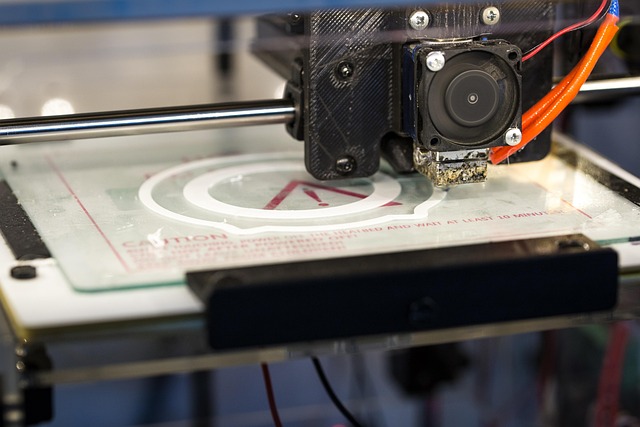TL;DR:
Concept-to-Production modeling is a structured framework for startups and inventors, leveraging rapid prototyping to transform digital concepts into market-ready products efficiently. This process includes concept development, validation, and iterative testing based on user feedback, significantly saving time, reducing costs, and enhancing product quality. By quickly building prototypes, gathering real-world feedback, and iterating designs, innovators can meet market demands accurately, increase competitiveness, and achieve successful product launches faster. Effective collaboration among diverse teams and clear communication channels are vital for managing the process successfully.
“Unleash your startup’s potential with Concept-to-Production Modeling—a strategic approach transforming ideas into market-ready products. This comprehensive guide explores the art of accelerating innovation through rapid prototyping, offering a step-by-step blueprint for startups and inventors.
Discover how efficient modeling can streamline development, from conceptualization to physical prototypes, ensuring a smoother path to product launch. Uncover best practices to execute your vision effectively, leveraging rapid prototyping’s power to stay ahead in today’s competitive market.”
Understanding Concept-to-Production Modeling: A Startup's Blueprint
Understanding Concept-to-Production modeling is pivotal for startups and inventors, serving as a comprehensive blueprint guiding their innovative journey from initial idea to market-ready product. This iterative process encompasses several key stages, starting with concept development and validation, followed by rapid prototyping to test feasibility and gather user feedback. By embracing agile methodologies, startups can swiftly refine designs based on real-world interactions, ensuring their products meet market demands.
Rapid prototyping plays a central role in this modeling approach, enabling inventors to visualize and manipulate digital concepts into tangible prototypes. This facilitates faster decision-making, reduces development time, and minimizes financial investment by identifying potential issues early in the process. Ultimately, Concept-to-Production modeling equips startups with the tools needed to navigate the complex path from conception to successful product launch, fostering innovation and maximizing their chances of success in a competitive market.
The Power of Rapid Prototyping: Speeding Up Innovation
Rapid prototyping is a game-changer for startups and inventors, offering an efficient way to transform concepts into tangible reality swiftly. This process allows for a continuous cycle of iteration and improvement, where ideas can be quickly tested, refined, and adapted based on real-world feedback. By creating physical prototypes faster than ever before, innovators gain valuable insights and make informed decisions, ensuring their products meet market demands accurately.
The benefits of rapid prototyping are manifold. It reduces development time significantly, enabling entrepreneurs to hit the ground running with a proven concept. This agility fosters a culture of innovation where experimentation is encouraged, risks are mitigated, and successful ideas can be scaled more rapidly. With each prototype, inventors gain a better understanding of their target audience’s needs and preferences, leading to more successful product launches and increased market competitiveness.
From Idea to Market-Ready Product: A Step-by-Step Guide
Turning an idea into a market-ready product is an exciting journey for any startup or inventor, and it’s crucial to have a structured approach. The process begins with defining the concept, conducting thorough market research, and creating detailed specifications. Once the foundation is laid, rapid prototyping becomes an invaluable tool. It allows creators to quickly build physical or digital models, test functionality, and gather user feedback, all while minimizing costs and development time.
Following this iterative cycle of design, prototype, test, and refine ensures that the final product meets market demands. Regularly reviewing progress against initial goals and adapting as needed is essential. By embracing rapid prototyping, innovators can streamline their journey, bringing their ideas to life faster and with greater confidence.
Best Practices for Effective Concept-to-Production Execution
When transitioning from concept to production, startups and inventors should embrace a structured approach that integrates best practices for effective execution. Rapid prototyping is a key strategy that allows for iterative testing and refinement of product designs, ensuring that solutions meet market needs. By quickly materializing ideas into tangible prototypes, stakeholders gain valuable insights into usability, functionality, and potential flaws, enabling them to make informed adjustments before full-scale production.
Another essential practice is fostering collaboration between diverse teams, including designers, engineers, and marketers. This interdisciplinary approach breaks down silos, encourages innovative thinking, and ensures that the final product aligns with both market demands and technical feasibility. Additionally, establishing clear communication channels and setting realistic milestones facilitate project management, keeping everyone on track and enabling swift response to emerging challenges.
For startups and inventors, embracing a concept-to-production modeling approach is key to success. By combining thorough planning with agile techniques like rapid prototyping, innovators can efficiently transform ideas into market-ready products. This strategic blueprint not only speeds up innovation but also ensures that every step from initial concept to final production is executed effectively. Implement best practices and leverage the power of rapid prototyping to turn your vision into a thriving reality.
